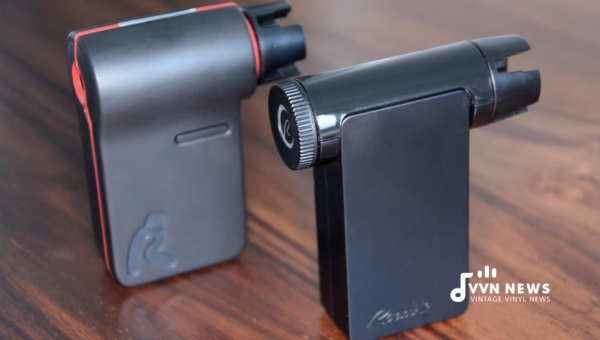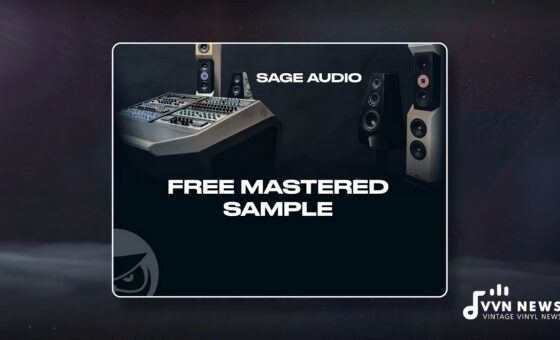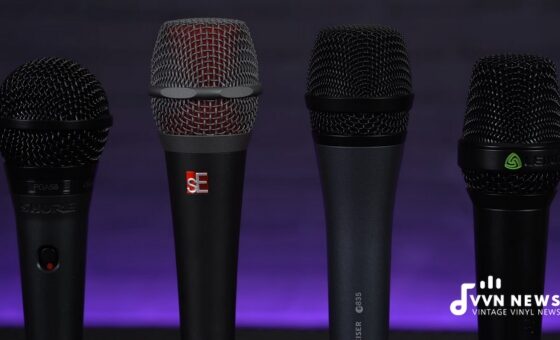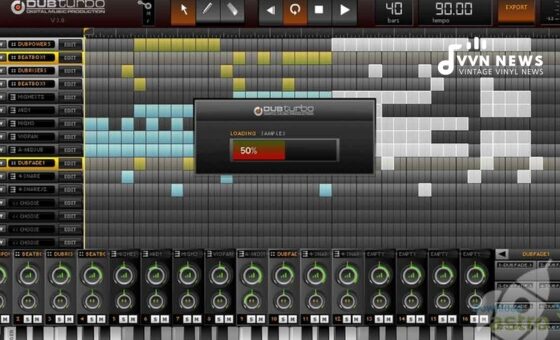As someone who’s always open to exploring the latest in music tech, I was excited when I got my hands on the new Roadie 2.
Today, I’m here to share a comprehensive Roadie 2 review that’ll give you an in-depth understanding of this product.
Whether you’re considering an upgrade or entirely new automatic tuners, this review will guide you. One of the most notable aspects of the Roadie 2 is its promise of hassle-free, precision tuning.
If you’ve ever struggled with an out-of-tune guitar on stage or during a late-night jam session, you’ll understand what a game-changer this could be. But does it live up to all the hype?
Stick around as we delve deeper into its features, usability, and performance. This Roadie 2 review is designed to answer all the burning questions about this innovative technology.
First Impressions on the Roadie 2
Immediately after unboxing, the compact and robust design of the Roadie 2 is what hits you.
The tactile feel of the device in your hands impressively imparts a reassuring idea of durability and high-quality make.
Being quite pocket-sized, it quickly becomes a convenient companion for music on the go.
When looking closer at its design, you’ll notice that it intentionally departs from its predecessor with a more defined and ergonomic shape.
Its layout seems tailor-made to fit comfortably within your grip, making handling an utterly effortless affair.
The front part of the tuner is adorned with three clickable buttons and a rotating bezel that doubles as an additional button.
This layout felt intuitive, and virtually no learning curve was required here.
The LED screen sits atop these controls in all its vibrant glory, adding a touch of finesse and user-friendliness.
Apart from these, I particularly found the obvious battery indicator (on the LED screen) quite useful.
Regarding my initial thoughts on aesthetics, Roadie 2 sports a minimalist vibe, which is very appealing. It comes across as sleek yet functional.
My first impression of this heralded Roadie 2 review was an optimistic one. The device immediately conveyed unwavering promises of efficiency right off the bat.
Operation of the Roadie 2: Setup and Usage
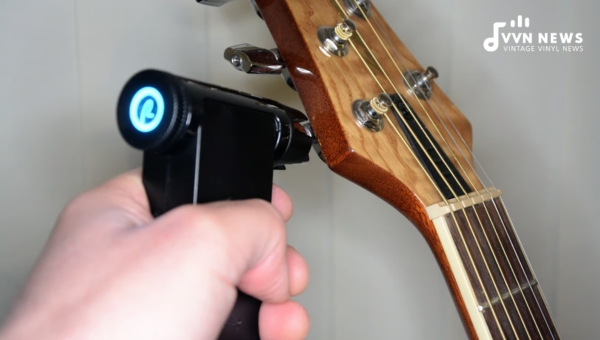
Walking right into the heart of this Roadie 2 review, it’s quite refreshing to note that setting up the device is as straightforward as glancing through a music sheet.
When you switch on the device, the LED screen lights up and immediately prompts you to choose your instrument.
The options range from a standard guitar to more specialized instruments like a ukulele or mandolin.
Choosing your device can quickly be done by scrolling through options using the rotating bezel.
Once selected, placing it on any tuning peg and strumming initiates an automatic tuning process.
Here’s where it gets interesting: Roadie 2 spins the tuning peg once it detects a tone until that string is in perfect harmony.
It’s like having your roadie at your fingertips! Plus, you’d be pleased to know its accuracy is exceptional, mainly when used in a quiet environment.
Another excellent feature is the capacity of Roadie 2 to store alternative tunings. You can save multiple custom tunings and swiftly switch between them with just a few clicks.
Completing this review would be impossible without mentioning its vibration detection mechanism that completely isolates your instrument’s sound from background noise, imparting high precision in noisy environments, too.
Also Read: 20 Best Phaser Pedals [Top Picks For Epic Sound Effects]
How Long Does Roadie 2 Last?
Once fully charged, Roadie 2 boasts an impressive battery life, which runs approximately a month under regular usage (assuming you use it once daily). Indeed, this could vary based on usage frequency, but it certainly means fewer worries about frequent charging.
When rejuvenating its lost power, plugging in the provided USB-C cable will have Roadie 2‘s battery back to its life within an hour. A progress bar on the LED screen smartly guides you as such.
For novice and professional players alike, getting accustomed to Roadie 2 will probably take less time than learning a new guitar riff!
Features of Roadie 2
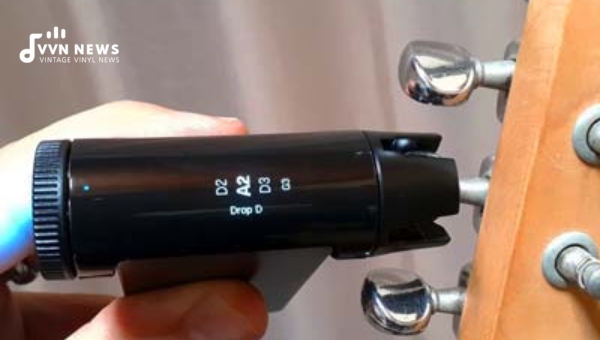
This part of the Roadie 2 review aims to shed light on the mechanics and capabilities that make it a must-have gadget for musicians.
From its key components, like the scroll wheel and LED Screen, to syncing with a mobile device, we’ll delve deep into what sets Roadie 2 apart from other tuners in the market.
The Scroll Wheel & LED Screen
The scroll wheel is more than just a control button. Besides navigating through various settings, it provides essential feedback on tuning progress.
When tuning a string, it rotates slightly in sync with the string adjustments. I found this to be an intuitive feature that allowed me to understand what’s happening in real time.
The LED screen provides critical visual information during tuning. It’s brightly lit, offering excellent visibility even in lower-light situations – pivotal for gig situations!
It keeps you well-informed throughout the process by displaying the selected instrument and corresponding tuning.
Syncing with a Mobile Device
Roadie 2 offers an optional but highly recommended mobile app on iOS and Android platforms.
The app gives you access to more advanced features like creating your instrument profiles and custom tunings.
With Bluetooth capabilities, syncing your device is a breeze; I found this particularly helpful when managing multiple instruments.
While reviewing Roadie 2, I discovered that the app significantly enhances the tuner’s functionality.
Also Read: Cordoba C7 CD Review [Is This The Perfect Classical Guitar?]
Vibration Sensing
One of my favorite features is vibration-sensing technology. Instead of relying solely on sound detection like traditional tuners, Roadie 2 senses the vibration frequencies from your strings.
This led to quick and incredibly accurate tuning, regardless of background noise – making tuning in crowded spaces less worrisome.
This automatic guitar tuner provides haptic feedback. When tuning a string – a slight vibration lets you know when your line has hit the correct pitch.
This was quite impressive for someone used to erratic manual tuners or shabby phone apps that lag or give inaccurate results due to environmental noises!
Considering its enhanced usability facilitated by technology such as vibration sensing, innovative controls, and an optional mobile app integration, Roadie 2 transcends from an automatic tuner into an artist’s companion.
The Roadie 2’s Built-In Software
Setting Up Your Roadie
Setting up the Roadie 2 unit is such a breeze that it feels almost intuitive. However, to be thorough in this review, let me walk you through the steps.
- Powering up: Start charging your device using the supplied USB micro cable. The LED screen will display a battery symbol with a progress bar indicating charging status.
- Naming your Roadie: Press the left button to power on once fully charged. After turning it on, you may call your tuner; this feature is beneficial if you own multiple units or plan to lend it out.
- Choosing your instrument list: Next, select ‘+ Add Instrument’ from the menu and choose from guitar, ukulele, banjo, and more. Now proceed by selecting ‘Add’ at the bottom of the instrument chosen page.
- Installing firmware update: Lastly, according to need, install available firmware updates (if any). These can significantly optimize performance and stability.
Customizing Tunings
One endearing quality of Roadie 2 that sets it apart from its peers is its phenomenal ability to handle alternate tunings effectively. To plunge into an ocean of customizable tunings:
- Accessing tunings list: Select an instrument from your added list and click on tuning; this will lead you to several available preset options like Open G/D/A/E/C tuning for guitars.
- Applying alternate tuning: After choosing a custom tuning option that fits your need or musical genre (like blues or folk), strum each string while following on-screen prompts one by one until all lines are perfectly tuned.
Ranging from standard EADGBE right up to NST (New Standard Tuning), SLCK (slack-key), and many more peculiar options – Roadie 2 has an inexhaustible list of tunings. Isn’t that something?
Also Read: Zildjian Review [The Iconic Brand Behind The Best Drum Cymbals]
Other Key Settings
In addition to those above, several other settings enhance user convenience significantly.
- Wind/Unwind Speed: The built-in motor speed can be adjusted based on personal preference – choose between low/medium/high.
- Beep Sound: Toggle on/off according to preference; alerts when guitar string tuning is complete.
- Screen Brightness: Useful feature for outdoor use or dim lighting conditions.
Henceforth, after understanding these steps involved in the configuration/customization of your Roadie’s built-in software – relying solely on lazy ears could become an outdated affair!
And with every step taken meticulously in unison – accompanied by breeze-like navigation driven by its built-in software – all earlier qualms about automatic tuners might dissipate after picking up a Roadie 2!
Though primarily designed with guitarists in mind – due respect was shown towards banjo players, ukulele enthusiasts, and even mandolin strummers, which makes it universally appealing, too!
Regarding my Roadie software walkthrough within this more excellent Roadie 2 review, understanding how it works doesn’t even begin with reading through pages-long manuals like yesteryears but only starts upon powering on & playing tunes!
More minor Details Matter: Roadie 2 Technical Specs

Sometimes, it’s the minutiae of these devices that determine how they genuinely perform. So, let’s delve into the technical specifications of the Roadie 2.
The Roadie 2 measures a discreet 3.4 x 3.0 x 1.0 inches and weighs a mere 3 ounces – this ultra-portable unit can easily fit inside your pocket or guitar case.
It runs on a powerful rechargeable lithium-ion battery, which claims to offer up to one month on a single charge or tune-up to 150 strings – pretty impressive efficiency there.
The device is made from high-quality thermoplastic, promising durability and longevity.
Including a USB-C port for charging is neat since it’s quite the standard nowadays.
Onboard, there is also an LED matrix screen with entire RGB colors – providing clear, virtually visible notifications and instructions even in less-than-ideal lighting conditions.
But the real star here is Roadie’s vibration sensing tech via its tuning peg connector for accurately detecting string vibrations.
At the heart, Roadie 2 boasts a powerful ARM-based processor capable of handling sharp tuning accuracy (< +/-1 cent).
Perhaps its unique feature, though, is that it can work entirely independently from any smartphone-supported app – all functions are built right in!
These specs underline Roadie 2 as a well-crafted package, thoughtfully engineered with keen attention to detail.
My Verdict On Roadie 2 Review
The Roadie 2 Automatic Guitar Tuner is your all-encompassing solution for precision instrument tuning.
This hand-held device is compact and handy, packing a lot of functionality within its capsule-like form.
Roadie 2 has an ergonomic design and a vibration-sensing ability that ensures accurate tuning regardless of noise levels. The tuner operates on a lithium-ion battery and has a USB-C-type charging port.
In terms of controls, there are four main click-buttons, including the scrolling wheel, which also works as a select button.
These are complemented by an interactive and easily readable LED display.
Ease of Use
To use the Roadie 2:
- Switch it on using the central button.
- Scroll through the list to choose your instrument.
- Then, select the string you want to tune.
- Attach to the tuning peg and strum.
Features, Advantages & Possible Disadvantages
Roadie’s extensive built-in memory can handle up to 40 individual instruments while allowing customization options for each, giving users unprecedented control over their sound.
The device seems slightly pricey for exclusive personal use but is exceptionally justified when utilized in professional settings or by serious music enthusiasts.
To encapsulate this Roadie 2 review, if impressive accuracy, speed, ease-of-use, and adaptability rank high on your list, otherwise disrupted by noisy environments or complex alternate tunings – then Roadie 2 could perhaps be your holy grail of automatic guitar tuners.
Also Read: G Minor Triad [Demystify This Common Guitar Chord]
Frequently Asked Questions
What is the Roadie 2?
The Roadie 2 is a high-quality automatic guitar tuner with remarkable accuracy and speed.
How does the Roadie 2 work?
The device operates by listening to the pitch of your instrument and tweaking it to your desired tuning with precision using its vibration sensor.
Is the Roadie 2 only for guitars?
While it is an excellent tool for guitars, Roadie 2 can also be used effectively with stringed instruments like ukuleles and banjos.
Does the Roadie 2 support alternate tunings?
Yes, indeed! The Roadie 2 supports various alternate tunings, adding to its flexibility.
Is there a mobile app for the Roadie 2?
There’s an optional mobile app that syncs with your device but is unnecessary; you can use all of its features without needing to connect it to an app.
Conclusion
Roadie 2 review, I am assuredly leaning towards recommending this efficient, user-friendly automatic tuner.
Its robust and stylish design, high tuning accuracy, and impressive battery life augur well for musicians on all levels.
For an innovative piece of technology priced modestly, Roadie 2 rightly earns its position as an indispensable tool in a musician’s gear bag.
